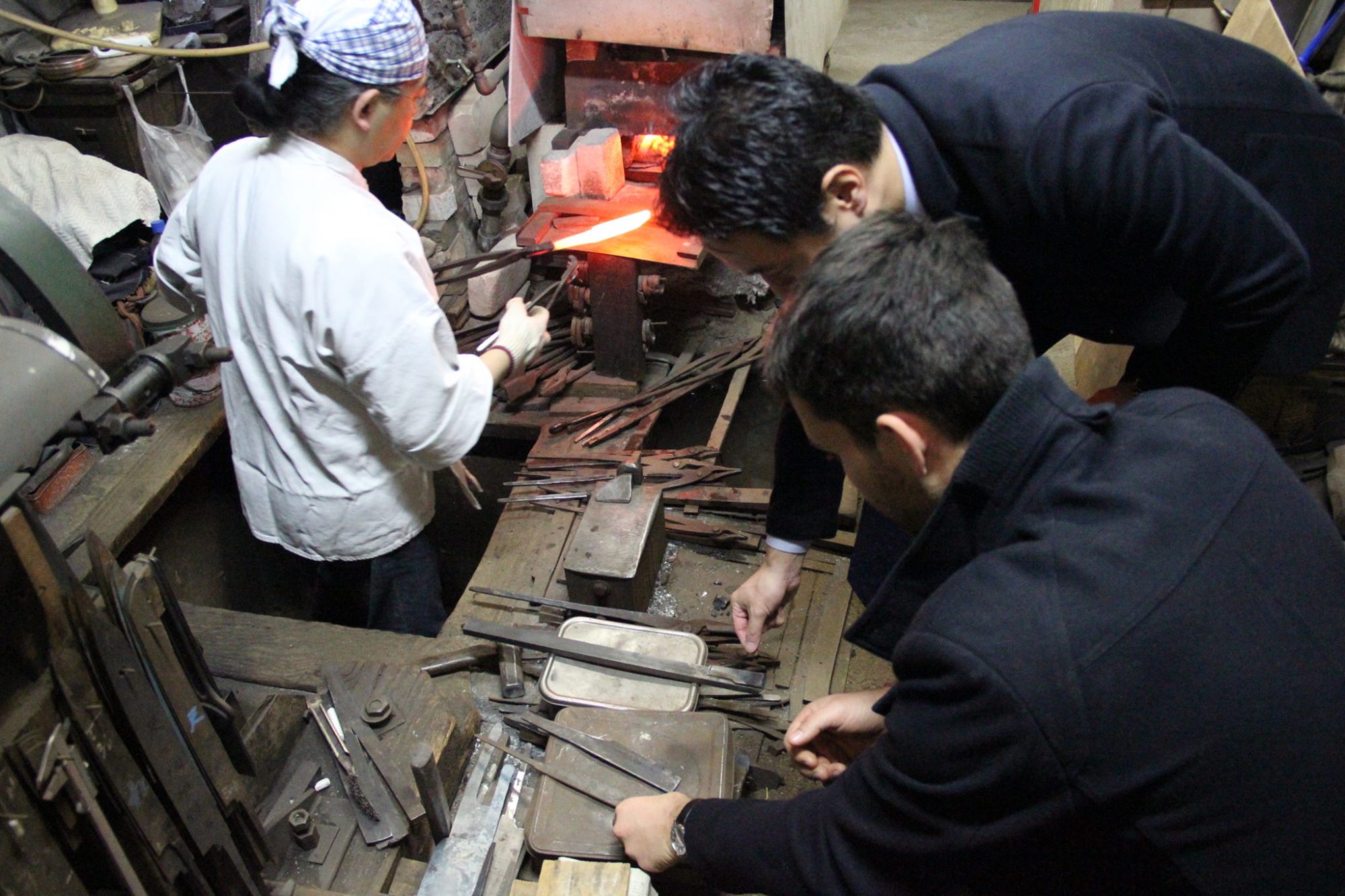What do the Portuguese and tobacco have in common with Sakai knife making a tradition in the Sakai region?
More than you would think. Sakai, the residential Osaka’s prefecture is a port town. In the past, the Portuguese arrived in this area and began trading guns and tobacco to the Japanese starting in 1543. Europeans brought by trade not only weapons, but also soap, tobacco, and other unknown products in Feudal Japan. The Japanese become very fond of these items and Japanese farmers began tobacco farming along with other crops soon thereafter.
From tobacco cutting to knives for cooking
Initially, the production was made for the elite class of Japanese society. The tobacco leaves were finely cut and smoked in pipes. Of course, farmers needed well-made, sharp knives to process the leaves and some entrepreneurial blacksmiths developed the necessary techniques to manufacture high-quality tobacco knives for such purpose. The first versions of the Japanese knife resembled a tall cleaver.
Sakai as a symbol for quality knives
These knives quickly became famous for their cutting-edge performance. Sakai name became synonymous with quality blacksmith production of steel cutting tools. With their razor-sharp edges and unmatched aesthetics, Japanese knives gained popularity around the world. And in Sakai, craftsmen or shokunin, have been making them for hundreds of years. Back then it was forging katanas for Samurai, then those old practices have directly translated to how craftsmen make cooking knives today.
Dividing the work
Soon after blacksmiths developed a network of small artisan shops spread within near proximity. Each shop focused exclusively on different tasks of the knife making process such as; grinding, handle making, and engraving. Instead of one guy doing everything, there were several areas of expertise and a different Shokunin for each.

Segmenting allowed for the second level of refinement. These artisans co-operated with dealers that acted as general contractors for the production of knives under many different brand names but all used the Sakai Wazashu seal of quality. Blacksmiths would do the initial forging, hammering, and heat treating of the blades, then the grinders would grind and sharpen the edge.
Next, the knives would be sent to the handlers. Then engraved by the knife distributor who sold the knives to other dealers under their family names. Astonishingly, this method of production survives to this day in this area and this is what distinguishes Sakai knives from other prefectures such as Gifu, Echizen or Niigata. This unique, collaborative feature of the Sakai knife makers is partly responsible for the high-quality knives produced.
How sharp are Sakai knives
With their extreme sharpness, Sakai knives shape is adapted for you to perform a cutting method called draw-cutting. When you use one, put the blade on the food, and cut by drawing the knife towards yourself.
The main point is – it requires less effort when cutting. The single-edged knife has one curved side which makes food difficult to stick. The reason why Sakai knives have become popular among professional Japanese chefs who do cutting work for many hours is the beautiful appearance they create.
Their extremely sharp edges cut through food without ruining fibres of it – making food taste even better.
Also, they don’t require much physical power to cut, the ingredients hardly stick to the knife so you can use it for a long time without getting tired.
How Sakai artisan factories really look like
At Oishya, we visit our partners as much as we can. During our latest trip in December, we’ve visited two of our main partner’s networks; the Sakai and Echizen one. You can see the photos of this trip here.

Sakai’s knife-making future is in question. It takes years to master these techniques, and this shokunin are in their mid-60s with little or no apprentices to take over their legacy. It may take ten years to get the technique, but it takes a lifetime to understand how to be creative with it, so younger generations are not willing to dedicate so much time to something in which the learning process is really incremental.

Though that is not to say these Shokunin are blind to evolution. They are willing to incorporate new things, but, at the same time, they are committed to their tradition and the old way of doing things.



























